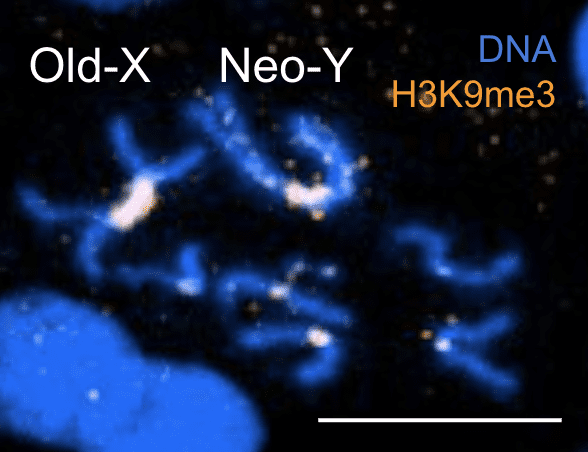The average lifespan is about 5 years longer for women than men in the U.S. Worldwide, the difference is even more staggering, with women living 7 years longer than men, on average. And it’s not just humans either. Mammalian female’s average lifespan is 18.6% longer than that of males, a much greater difference in longevity between the sexes observed in human populations, according to a 2020 study published by researchers at the University of Southern Denmark and University Lyon 1.
Scientists have proposed a number of explanations for why females tend to live longer. One is that males are often larger and invest more energy into sexually dimorphic characteristics such as larger horns. Another explanation is that males produce more androgens such as testosterone than females. When present in high amounts, male hormones can impair some aspects of the immune system, making males more susceptible to infection and disease.
These may all be factors that contribute to some extent to the observed differences in lifespan among the sexes, and a new study may add a new one that is encoded in our genes.
In a new study published today in the journal PLOS Genetics, researchers led by Doris Bachtrog of the University of California, Berkeley, reported that male fruit flies have repetitive sections of the Y chromosome that create toxic effects.

The Y chromosome is a unique part of the genome since it does not recombine over some or most of its length and represents male-limited transmission. In many organisms, a significant fraction of the genomic DNA is highly repetitive, with over two-thirds of the sequence consisting of repetitive elements in humans.
“Y chromosomes are derived from ordinary autosomes (that is, they used to be homologous with the X), and over time, they degenerate. Degeneration includes the loss of genes initially present on the Y, but also the accumulation of repetitive “selfish DNA” – such as mobile elements, that can replicate themselves, and spread across the genome. These selfish elements are particularly likely to spread on the Y. Mobile elements are harmful to the organism because they can insert themselves into genes, and destroy their function,” Bachtrog told ZME Science.
Earlier, many of these repetitive DNA sequences were viewed as ‘junk DNA’, but we now know they can play a major role in genome evolution. These include transposable elements (TEs), which are mobile DNA sequences that can change position, and satellite DNA, which is found near centromeres.
Both males and females carry repeat DNA sequences in their genomes, but Bachtrog and colleagues suspected that a large number of repeats lie within the Y chromosome.
To put this hypothesis to the test, the researchers used a technique called chromatin-immunoprecipitation to study the genomic distribution of heterochromatin in young and old male and female fruit flies (Drosophila miranda), as well as RNA-sequencing to study the genetic activity of mobile DNA.
The researchers found that males have twice as much repetitive DNA as females. Specifically, young males had compromised heterochromatin, and much higher activity of mobile DNA, both of which contribute to shorter lifespans. Humans also have heterochromatin, which is a tightly packed repeating DNA.
As the male flies age, their DNA assumes a looser form that activates more repeat sections, resulting in ‘toxic’ side effects, such as induced genomic instability and DNA damage. The new study essentially shows there may be a link between repeat DNA and aging, which is currently still poorly understood.
“Our data provide empirical support that toxic Y chromosomes can diminish maile fitness, and contribute to sex-specific aging in species with heteromorphic sex chromosomes,” the researchers wrote in their study.
Other studies published previously found an association between more active repeat sections and impaired memory, shorter lifespan, and DNA damage. It is perhaps such damage to the Y chromosome that may explain some of the lifespan differences in humans as well, although more research is needed.
“Humans contain large stretches of repetitive DNA, and heterochromatin alterations have been identified as drivers of human aging. Like in flies, human males tend to live shorter than females, suggesting that differences in heterochromatin content may contribute to sex-specific aging in our species as well,” Bachtrog said.
Was this helpful?



